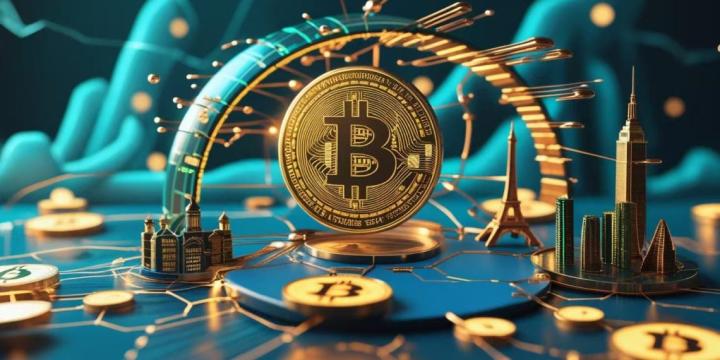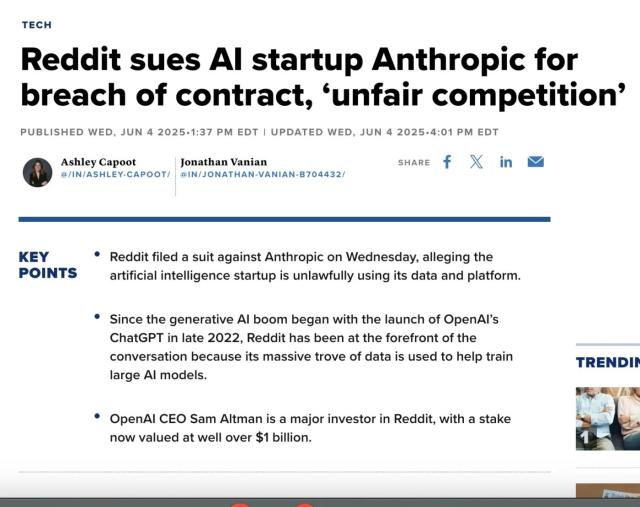The term internet capital market encompasses many meanings. In today's context, internet capital market refers to the "chain alchemy" results purely driven by blockchain technology advantages: financial technology that disregards geographical boundaries. You can use "magic internet money" for lending, tokenize treasury bonds and private credit, issue stablecoins - in today's world where traditional finance and digital assets converge, people call all this the "internet capital market".
But for veterans who have been born and bred in on-chain trading, breathing the air of this asset class, the meaning of internet capital market is more than just "on-chain treasury bonds" - it refers to Non-Fungible Tokens, DeFi, ICO, and various speculative tools invented in the past decade, as well as tokens tradable since the first smart contract was deployed on Ethereum in 2015.
This article aims to focus on the original logic behind currencies, narratives, ten-fold, hundred-fold gains, and airdrops, dissecting this aspect of the internet capital market. We are about to enter a "new metaverse" in the words of OG crypto players. To analyze this, we must first observe these capital formation mechanisms and the differences they bring.
Evolution of Market Financing Mechanisms
Looking back at past cycles, we see market financing mechanisms constantly changing. From ICO, to centralized exchange Altcoins (CEX Alts), to meme coins... The above chart has already summarized this, which can be briefly summarized as:
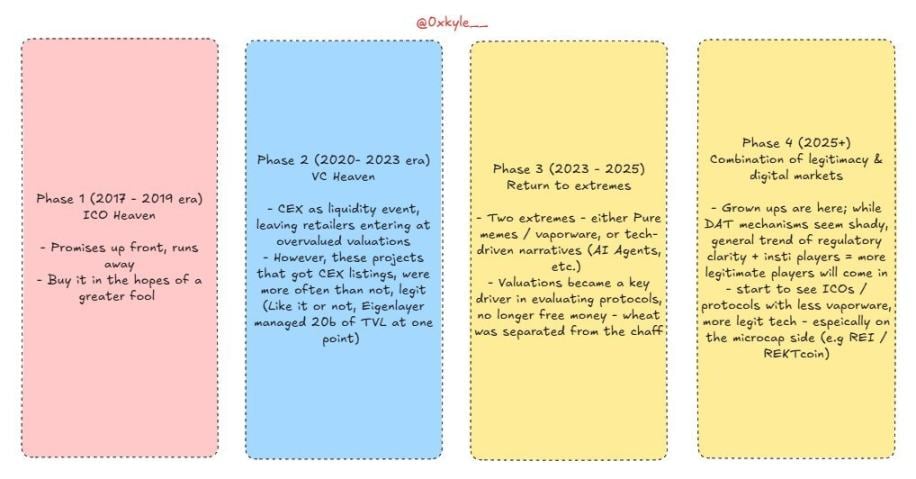
Original ICO (2017 Era)
In this mechanism, funding was based on project parties' "promises", with the purpose of selling to a bigger "fool". The technology was hardly truly usable or valuable. Most of the time, it was a game of "pass the parcel". Typical cases: Bitconnect, Dentacoin, etc.
VC Paradise (2021 Bubble Period)
This wave attracted institutional capital, but looking back, it caused great damage to the industry - absurdly high valuations, poor incentive design (who would work with a hundred million dollars?). However, this wave also brought more reliable products - so it cannot be completely written off. Although inflation valuation was severe, many protocols you love today were born. Take Ethena as an example: I really like it, but the mechanism of "giving too much too early" indeed harmed its early token performance; however, it is undeniably one of the best crypto products currently. This was also the era when projects like Solana and Uniswap rose. Even if one has disagreements about their governance or operations, it was not entirely bad.
Polarization
After the extreme regression of the FTX collapse, the crypto field encountered an existential crisis - distrust spread, and many began to believe "everything is a scam". I once felt the same, but we need to see the nuanced differences. Although it seems like a casino, not everything is a casino - stablecoins and tokenization are discovering enormous value in real scenarios, not just issuing memes or serving as dollar trading pairs for niche assets. In this stage, pure meme coin projects like dogwifhat, Pepe, and more "serious" narratives like AI agents emerged. Valuations dropped significantly. You might ask, "Is everything just a meme?" But in reality, not everything labeled "meme" is destined to remain at that stage. Maturity is a slow process, and some projects have crossed from "label" to "serious", like REI.
Legality and Integration with Digital Markets
We are entering the "adult era" - institutions have arrived and are genuinely excited. But having been inside the "factory" for too long and seeing how "sausages are made", we can't help but be pessimistic about Circle's IPO.
Knowing too much can become a curse - labeling everything as "meme" will only make you lose faith. Look at Ethereum: it was the worst-performing asset in two years, with many heavy holders selling out, and media criticism was constant.
Yet look at the situation now: do you think Tom Lee knows (or cares) about the awkward video of Ethereum Foundation leaders singing and dancing? Do you think institutions like BlackRock, who launched a tokenized fund on Ethereum, care about the Ethereum Foundation's "soy-boy mentality"?
The answer is negative, which is something you must internalize. Most cryptocurrencies have forgotten how to "dream," while traditional finance is relearning how to "dream." This will bring more opportunities - as digitalization and mainstreaming progress, more high-quality builders will join in.
Future Landscape of Internet Capital Markets
This is what I call the internet capital markets. We are entering an unprecedented prosperity period in the past five years - a perfect combination of regulation, technological prowess, and capital, with a significant portion occurring on-chain. Without joking, I believe that some of the most valuable companies in the coming years will issue tokens on-chain.
In fact, this is already happening. Hyperliquid is the pinnacle representative of internet capital markets. It did not accept VC investment, has no equity burden, and is a purely on-chain token project, initially not listed on exchanges.
Let me emphasize again: Hyperliquid was once a $40 billion enterprise, without roadshow materials or equity structure burdens. This pure on-chain giant emerged and dominated the market, now advancing towards an annual revenue of $1 billion - from zero to one. It is the purest embodiment of how internet capital markets operate.
But please don't misunderstand, I'm not praising Hyperliquid. I believe there will be more such cases in the coming years. Isn't it exciting? We are moving towards an abundant era - don't let your cynicism kill your original dreams. Sadly, this is obvious to many, but they are busy chasing 50% returns of some random shit coin because that's what we've been trained to do in the past four years. It's time to have bigger dreams - the script is already written.
Now, the shackles binding us no longer exist. People have been constrained by past structures for too long - but in the internet capital markets era, having 5-10% of your own currency and building it into a product worth $100 million to $1 billion will far exceed people's expectations.
Yes, financing is still necessary, and ICOs are understandable. But look at Hyperliquid's path: if you have confidence in the product, issue an on-chain token, retain sufficient shares, and let the market, the arbiter of truth, determine its value. What's wrong with capitalism? It makes participants too short-sighted. It indeed drives innovation in the right direction but fails to truly promote innovation. Too many people are satisfied with quick money, missing the greater long-term compound returns.
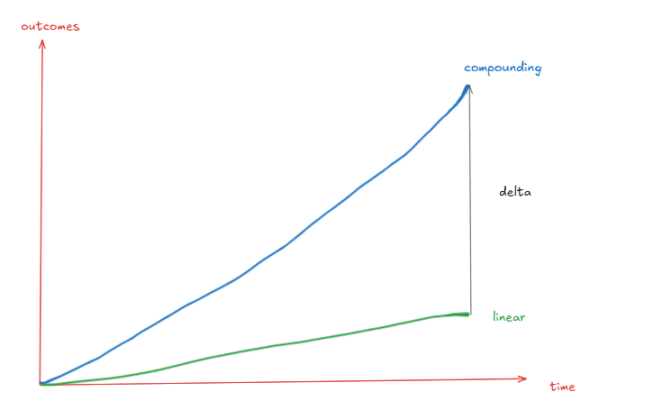
Long-term thinking usually brings geometric rather than arithmetic results - for example, doubling in 2 years, quintupling in 4 years, and tenfold in 5 years.
Of course, you can develop a product and abandon it to earn $10 million, or you can spend a few more years developing the product to earn $300 million.
Conclusion: From Speculation to True Ownership
Lastly, let's talk about the speculative nature of the market. In the short term, the market is undoubtedly a voting machine - "valueless" assets will rise, "good assets" will exceed intrinsic value, and team sell-offs may recur.
But the key is that this wave of digitalization will attract more excellent, truly constructive founders, and I believe this is the inflection point that will spawn more outstanding on-chain products.
Think about that diagram: it will never go to zero, but it doesn't need to. Look at Hyperliquid, Ethena, Aave - they all have $1 billion in annual revenue, stablecoin TVL of $10 billion, and net deposits of $60 billion. Look at Pengu, Rekt - 197 trillion total plays, 2 million global peripheral sales, even launching drinks in 7-11 stores across the US. They are all backed by on-chain tokens.
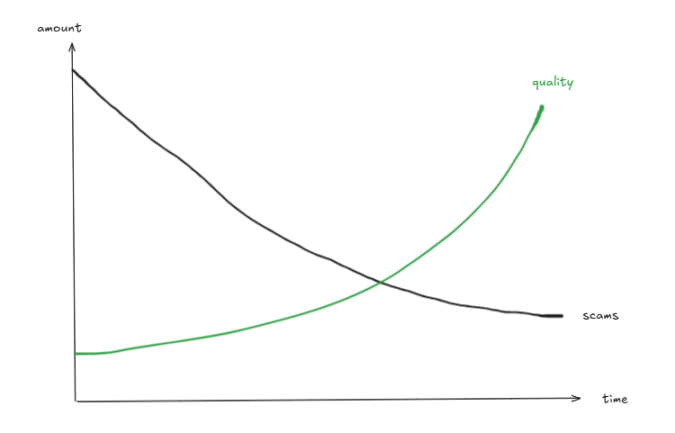
The more S/A-level projects/founders, the less focus on C-level and below founders - less attention to air coins and other short projects, more focus on projects that can truly achieve compound growth
We can argue whether they are overvalued or undervalued, but I'd rather discuss this than return to an era of "empty promises." The era of being forced to buy enterprise assets that sell promises but yield no results. I'd rather own something tangible than pretend to play musical chairs.
If you always treat every coin as a "meme," you're wasting opportunities. Tokens issued by projects like Hyperliquid are no longer far-fetched. The next Steve Jobs will likely issue tokens on-chain. Some of these assets will ultimately become on-chain giants controlling the financial future. And we all have the chance to buy them. Simplifying them as "just a meme" is an excellent way to obtain thousand-fold returns.
This is the evolution of speculation: we've moved from trading worthless air to now being able to truly own solid, durable, and most importantly, on-chain assets that will determine the future world.
It's time to restore belief, forget past constraints, and reshape dreams. The future is bright; don't let the shadows of the past obscure your optimism about the future.
This - is the future I see: Internet. Capital. Markets.



